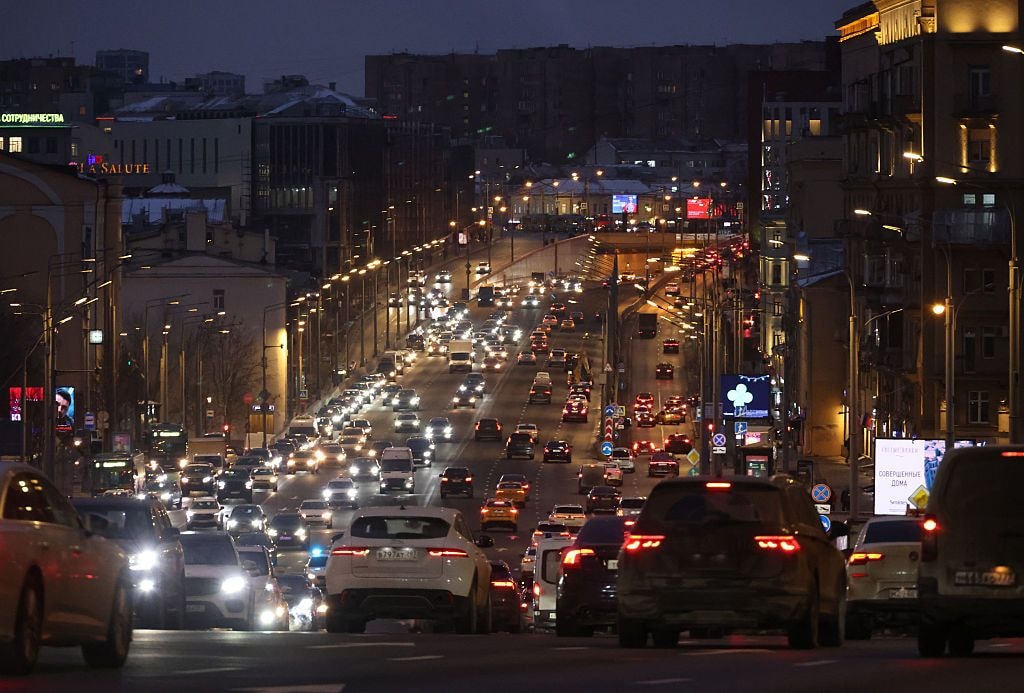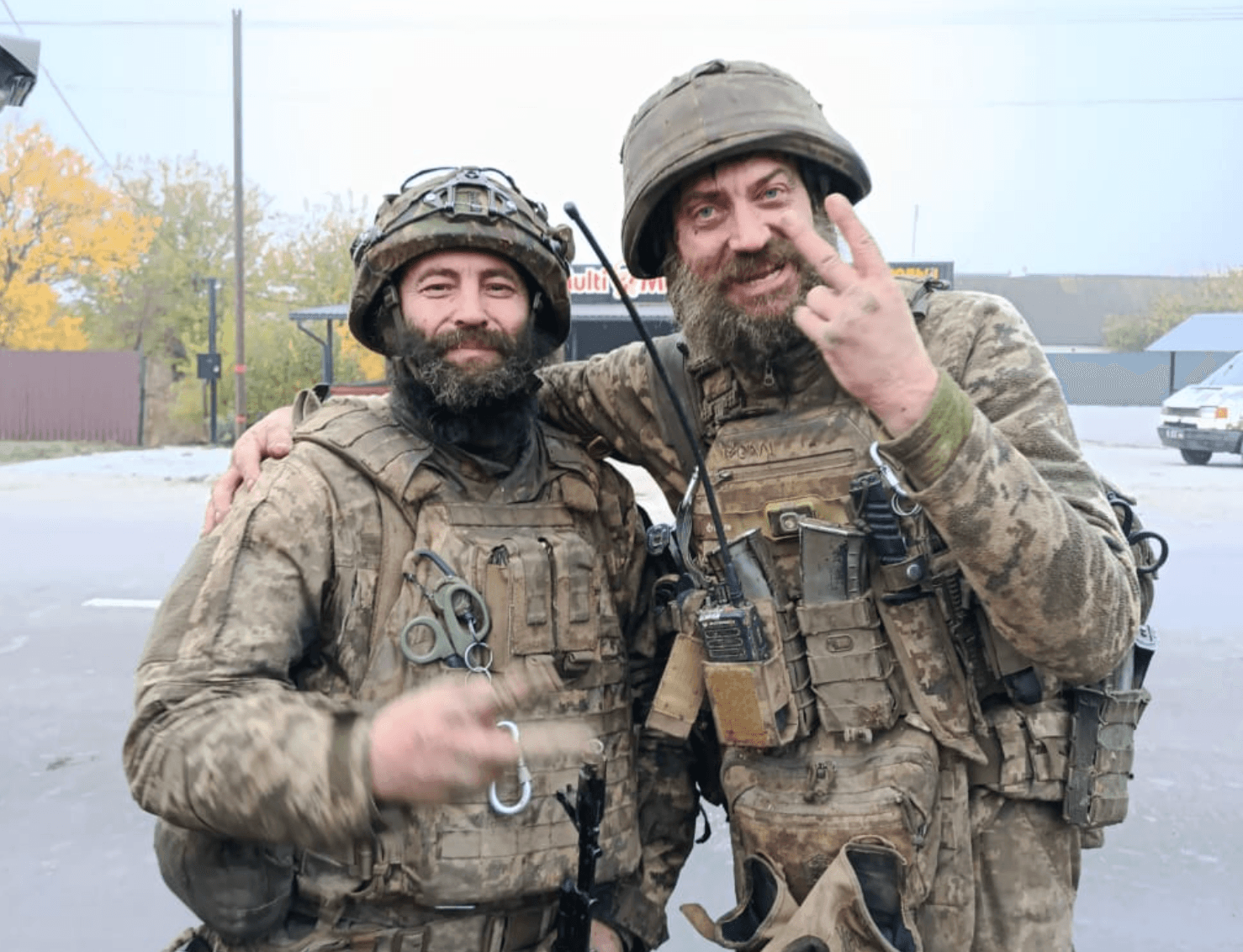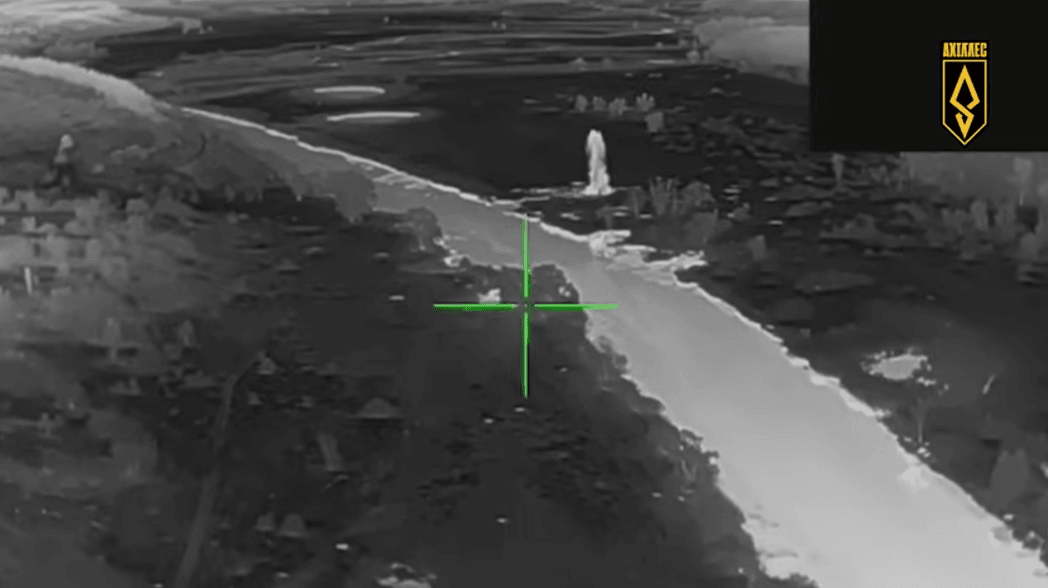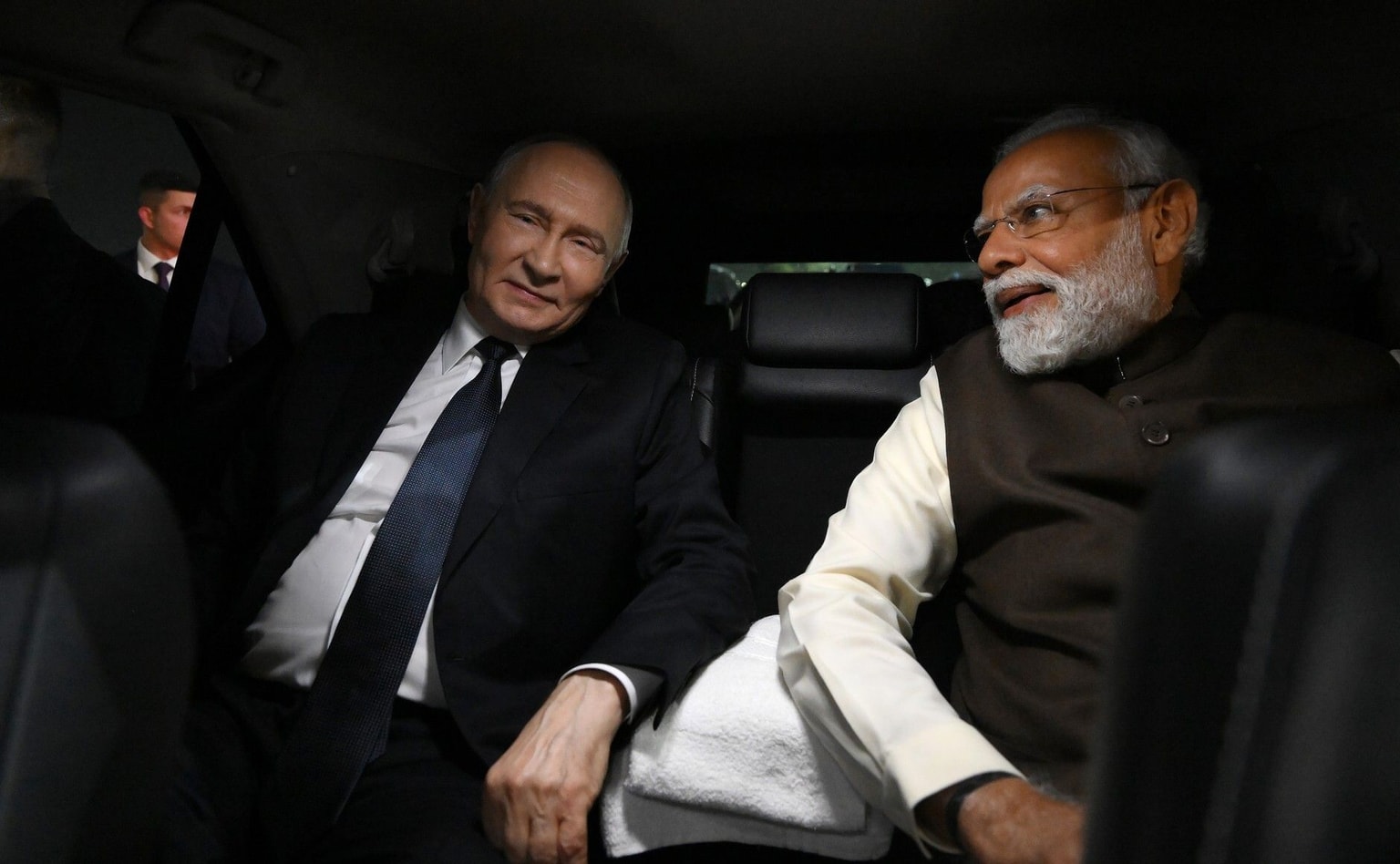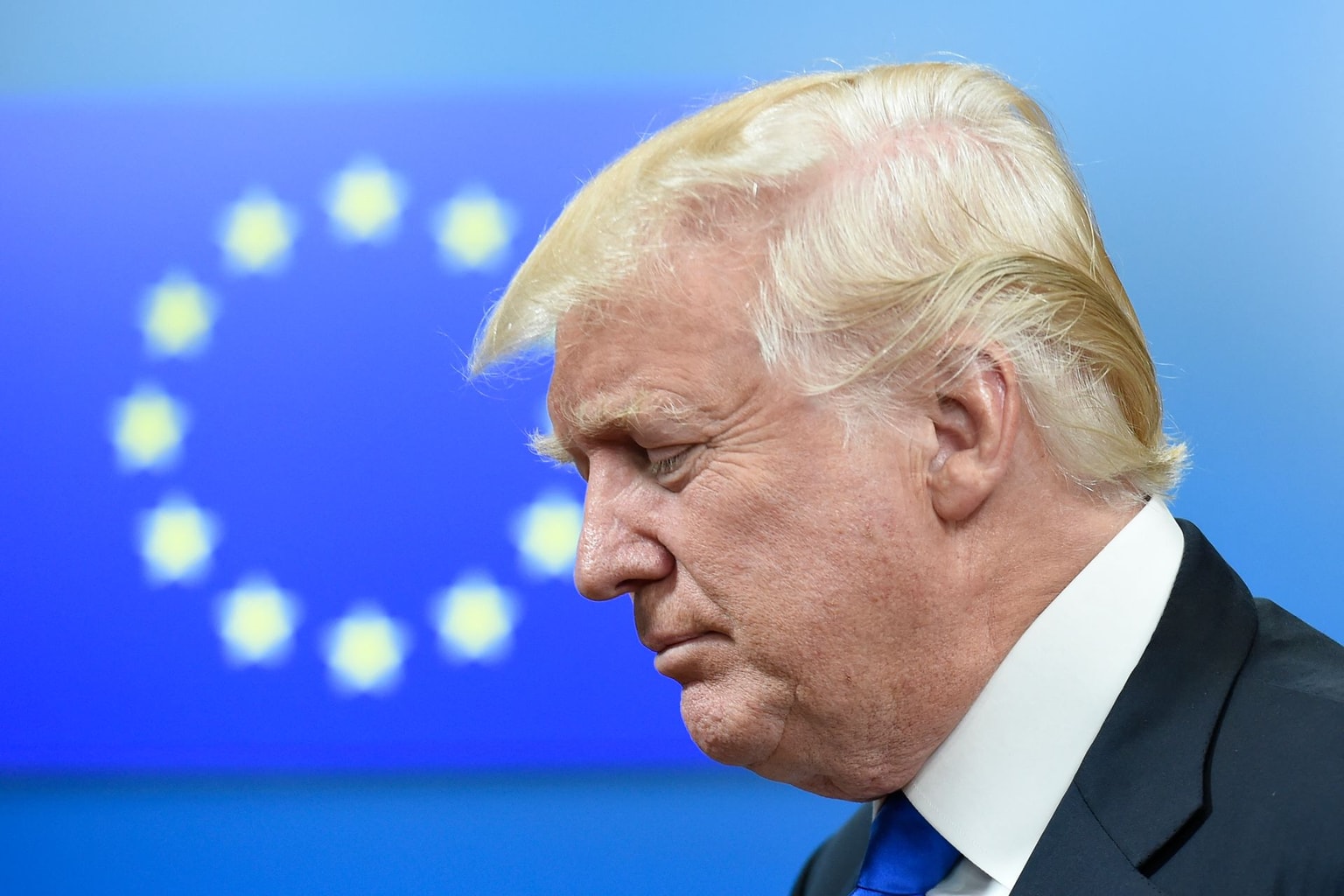
What happens to all the guns in Ukraine post-war?
A cadet of the military institute at Taras Shevchenko National University during an oath-swearing ceremony in Kyiv, Ukraine, on Sept. 8, 2023. (Andrew Kravchenko / Bloomberg via Getty Images)
As peace talks ramp up, experts and officials are already working on a looming post-war threat: the potential large-scale proliferation of guns in Ukraine once they are no longer needed on the battlefield.
"When the war ends, Ukraine will not only have to rebuild its infrastructure and resettle displaced people — it will also have to deal with collecting and disposing of vast quantities of arms and ammunition that were lost or abandoned by combatants on both sides, or stockpiled by civilians," said Nicolas Florquin, senior researcher and head of data and analytics for the Geneva-based independent research group Small Arms Survey.
Up until Russia’s full-scale invasion, only those approved for licenses could legally obtain a firearm. That changed once martial law was introduced on Feb. 24, 2022.
In Kyiv alone, during the first few days of the full-scale invasion, more than 25,000 automatic rifles and about 10 million bullets were handed out to civilians for Ukraine’s defense, according to public comments from then-Internal Affairs Minister Denis Monastyrsky.
As the war has dragged on for more than three years, new weapons have continued to pour into the country through government procurement and aid packages. The exact number is difficult to calculate from publicly available data, Florquin said, because of the many different sources and incomplete ways that shipments are often described in customs data, for instance.
And recently, sporadic headlines of shootings, like a case earlier this month in Kyiv where a man killed a soldier and his mother-in-law in a dispute over the illegal sale of a firearm, have raised concerns about whether illicit guns are spreading.
Yet fears — and Russian disinformation — about skyrocketing gun crimes or weapons leaking outside the border have so far failed to materialize. According to research conducted by the Small Arms Survey, access to firearms for the average civilian household has, in fact, decreased since 2022.

"The active war at the front line is serving as a bit of a magnet for most of these weapons (because) they are needed at the front line, preventing any large-scale diversion both within Ukraine and to foreign countries," explained Florquin. Active efforts by the Ukrainian government to address the threat of weapons proliferation through searches and seizures are also helping to curb their spread, he added.
Meanwhile, around one in ten households with victims of recent crimes surveyed in 2024 said the incident had involved a firearm — a slight rise from prior surveys that Florquin described as "something to watch" but "not yet alarming."
"Obviously, the challenge will be to collect and dispose of excess weapons when and if this magnet effect of ongoing major conflict ceases," he added.
Steps for reform — but no new gun control law yet
Ukrainians may possess somewhere between one million and five million weapons, Internal Affairs Minister Ihor Klymenko stated last year.
Ukraine has already implemented some new gun control measures since the war broke out, and discussions with the Europan Union on the topic had started before the full-scale invasion as part of the required reforms for joining the bloc.
"If we talk about what the authorities are doing now, the government is largely guided by requests from international partners, particularly the European Union," said Viktoriia Voronina, executive director of the Center for Security Studies (CENSS) in Kyiv. "For the European Union, arms control is one of the points they put as a priority."
"Today, the issue of threats from illegal arms trafficking is more internal. Because weapons are found in playgrounds, weapons are found in apartments."
One recent change is the June 2023 introduction of a unified registration system for firearm holders, though registration is currently voluntary.
While research from the Small Arms Survey indicates that awareness of the registry has grown among the public since it was launched, more than a third of Ukrainian households with firearms said they had not registered any of them a year later.
Another step has been the creation of a new coordination center to combat illegal trafficking of firearms, gun parts, and ammunition. The center, which had its first meeting in February and is headed by the Internal Affairs Ministry, acts in an advisory role and brings together multiple law enforcement agencies, ministries, and international organizations.


Although the coordination center has no decision-making authority, it has been useful for consultation and policy development, Voronina said. While these efforts were underway before, they have "now acquired a more coordinated character."
Yet perhaps the most important gun control reform step still hasn’t happened — passing a law on gun control.
Ukraine’s weapons controls are currently regulated by a parliamentary resolution, an Internal Affairs Ministry directive, and Ukraine’s criminal code, but proposed legislation giving citizens the right to carry certain firearms and regulating the practice has stalled in parliament for years. A draft of a gun control law passed its first parliamentary vote on the eve of the full-scale invasion, but has yet to pass a required second reading.
"The fact that we have not yet passed such a law for 30 years (of Ukrainian independence), I think, indicates that this is already a political issue," said Voronina.
Voronina’s work with CENSS conducting focus groups has shown that attitudes toward gun control vary by region, she explained. In regions of Kharkiv, for example, closer to the front-line fighting, Ukrainians were more likely to believe that weapons should only be carried by the military. In central Ukraine, they found that citizens were more likely to believe they should be allowed to carry weapons to defend themselves.
"It will be very difficult for us in Ukraine to identify some kind of unified opinion, a single basis for how we start a policy" on weapons control, she said.
But while international discussion around Ukraine's arms control has focused primarily on risks of international trafficking, "we currently do not have a very high percentage of weapons leaks abroad," Voronina said. "Our law enforcement agencies keep this issue under high control. Today, the issue of threats from illegal arms trafficking is more internal. Because weapons are found in playgrounds, weapons are found in apartments."
Florquin echoed her view that the domestic risks of unchecked proliferation — including its impact on violent crime, accidental discharges, and suicide within Ukraine — are higher than the risks posed to neighboring countries, which so far have not seen trafficking from Ukraine on any significant scale.
Small Arms Survey has been studying arms proliferation and violence in and around Ukraine since 2015, Florquin noted. "What we're seeing is, those who will pay the greatest cost will be the Ukrainians. They will be the ones having to manage the challenge of arms proliferation and to pay most of the human cost."


